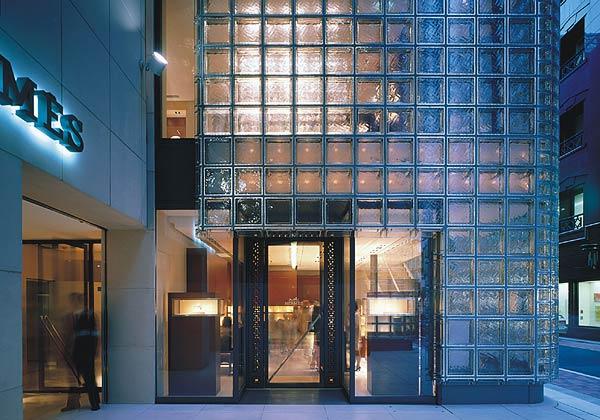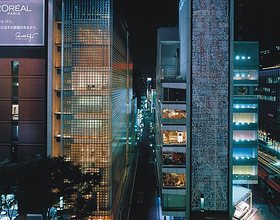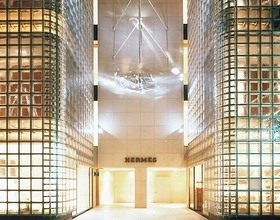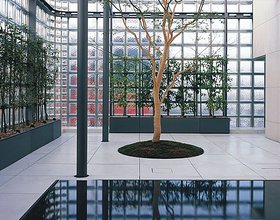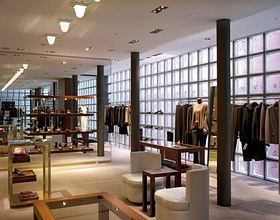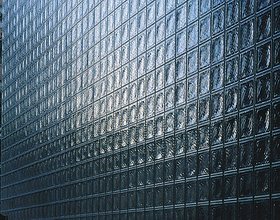MAISON HERMÈS
-
Celebrated French fashion house Hermès commissioned Renzo Piano to design a building for their Japanese headquarters in 1998.
Its location at the heart of Tokyo’s densely built, neon-lit Ginza shopping district, and the stringent building regulations regarding earthquakes and fire, have influenced a compact and unique building with a distinctive glass façade. The building contains a shop, offices, an exhibition space and access to the underground station below Harumi Avenue.
The slim building, only 10m wide on its Harumi Avenue frontage, runs back 56m along a quiet side street, and rises 10 storeys high. It has a unique glass façade made of 13,000 bespoke, 450mm-square glass blocks (with special smaller, curved glass bricks at the building’s corners). Much larger than standard glass blocks, these were especially made by Vetroarredo in Florence, Italy and had to meet stringent fire and earthquake regulations. Their stamped textured glass finish means they are translucent rather than transparent, the overall effect of the facade being somewhat like a contemporary version of the traditional Japanese screen.
Hung from the structure on steel arms, the glass block facade is designed to act like a curtain in the event of an earthquake, allowing it to move via the flexible seals between the blocks by as much as 4mm, absorbing rather than resisting seismic shock.
This translucent membrane is unchanging as it screens the office floors and upper levels of the shop, wrapping the building all the way down to the ground. Only at ground floor level, along the longer side-street elevation do you find the occasional clear glass brick framing a precious display of Hermès products. The tiny Harumi Avenue frontage is the sole place on the building for more conventional, full-height shop display windows.
Inside, the shop extends over four floors from ground floor to 3rd floor, with ateliers and offices above, and a double-height exhibition space on the 7th floor. A planted courtyard garden open to the sky tops the building but remains screened from the street by the glass block facade.
Services and circulation are housed at the back edge of the building in an opaque strip along the party wall. The glass facade stops short of this with a curved edge, revealing the escape stair and helping to define the edge of the building.
By day, the facade is silvered and sparkling; by night it glows warm like a lantern, a distinctive presence in the crowded shopping district.
Photo credits: Michel Denancé
1870 Projects

